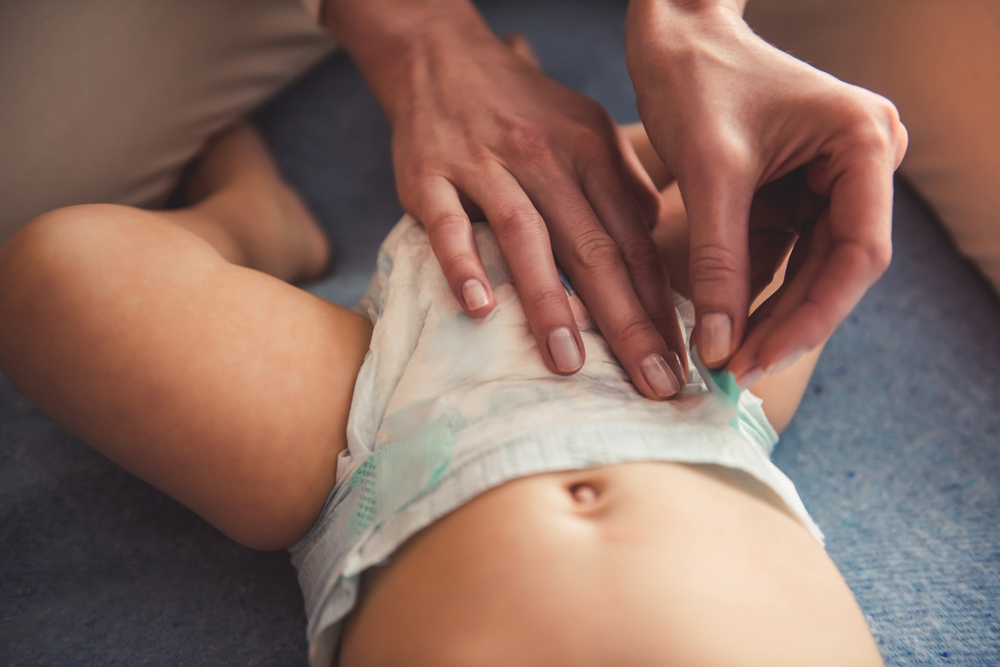
Let's admit it: The mysteries of a baby’s diaper are endlessly fascinating, especially in the early months when so much changes. “Babies do produce weird poo sometimes, just like adults can,” says Adam Hart, Ph.D., professor of science communication at the University of Gloucestershire, in the U.K., and author of The Life of Poo. Here’s what you can expect to find at changing time.
First Poop
The poops that normally occur in the first two days of your baby’s life look nothing like her later bowel movements. Early poop is a black or dark-green, thick, sticky substance almost like tar, called meconium. The reason why it’s so different is because it’s not formed from the digestion of breast milk or formula. All of your baby’s nutrients in the womb were supplied through your placenta. Meconium is made up of intestinal cells, lanugo (the downy hair some babies are born with), mucus, amniotic fluid, bile, and water, says Bradley Howard Kessler, M.D., director of pediatric gastroenterology at Good Samaritan Hospital Medical Center, in West Islip, New York. Meconium doesn’t smell bad, although it’s much harder to clean up than regular poop (applying a thin layer of petroleum jelly to your baby’s skin will make the cleanup easier as it acts as a barrier). Consult your pediatrician if your newborn has not passed any meconium within 24 to 48 hours after she’s born.
Yellow Poop
By the end of the first week, healthy babies digest food in the usual way. Baby poop is then made up of bile from the liver, which is added to food when it leaves the stomach, along with bacteria and undigested components of milk. If you’re breastfeeding, your baby’s poop will be bright yellow, watery, sometimes seedy, and lightly yeasty-smelling. Formula-fed babies can produce a browner, thicker poop but it may still have a yeasty scent. In fact, many mothers report that the smell of their baby’s early diapers is pleasant. The aroma comes from the fermentation of sugars in milk, similar to the process that makes bread rise, explains infant-nutrition specialist Linda Palmer, author of Baby Poop: What Your Pediatrician May Not Tell You.
Brown Poop
When your baby starts eating solid food, a broader range of healthy bacteria populates his intestines, producing more complex, browner, smellier poop. This completely inevitable transition happens over time. Gut bacteria are influenced by a range of things researchers are only just beginning to explore.
Healthy poop will range from mushy to firm, but hard pellets might indicate that your baby is constipated or dehydrated, so consult your doctor if you see two or three of these types of diapers in a row. Don’t be alarmed if you see food in his diaper, especially before he has learned to chew properly, as his digestive system learns to cope with solids. Undigested vegetables, as well as iron-rich foods or supplements, can also make his poop appear dark green. However, if food is consistently undigested, check with your doctor that your child is absorbing enough nutrients. (This can be determined in part by growth and weight gain.)
Problematic Poop
Bright-green poop is usually a sign that food has moved rapidly through your baby’s system, perhaps because of a mild tummy bug, as bright green bile has not had time to be broken down. If your baby has smelly gas along with greenish poop, it could be the result of her drinking too quickly either from the breast or a bottle. Discuss strategies for slowing it down with your pediatrician; once that’s taken care of, the poop should return to normal. If it doesn’t, you may want to consult your pediatrician to rule out a food intolerance,such as an intolerance to cow’s-milk proteins from your diet or formula. This can also cause milk to pass quickly—and undigested—through a baby’s system, creating a green, frothy effect.
If you see other colors in your baby’s poop, like red, white, black (after the meconium stage), or pale yellow, make an appointment with your doctor to rule out possible causes. Silver, wine-red or maroon, or raspberry gel-like poop need urgent medical attention.
Parents Magazine

